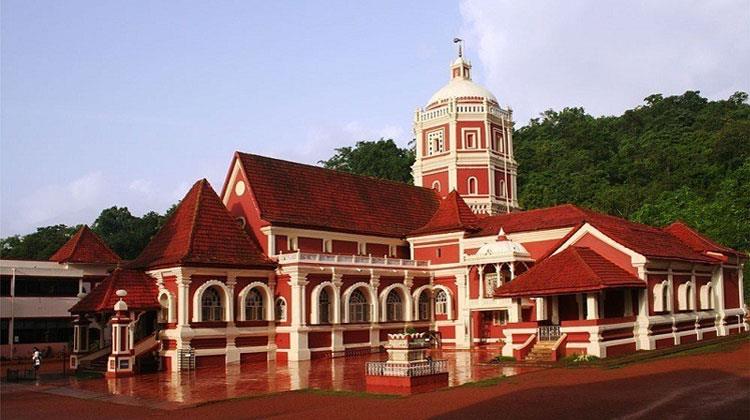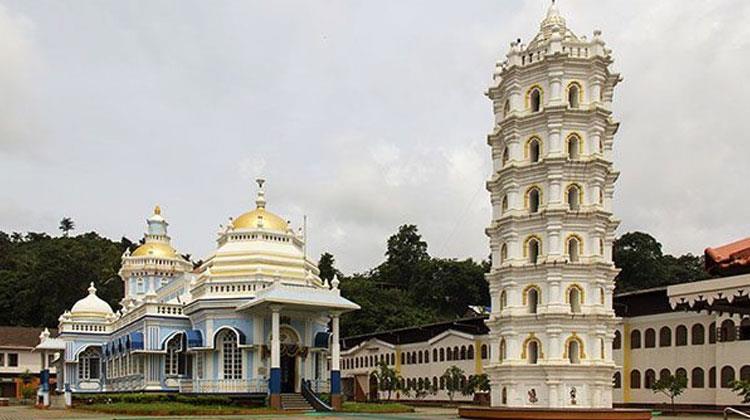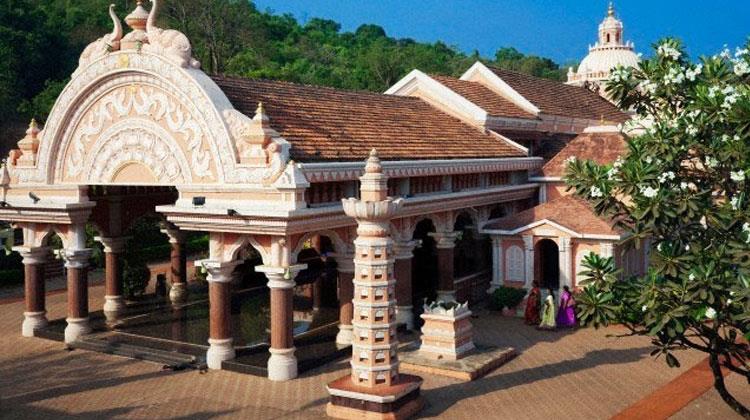Religious



Shri Shantadurga Temple
Shri Shantadurga Temple is a large temple located at the foothill of Kavlem village in Ponda Taluka. This temple is considered as one of the most important and the biggest temple in Goa. This temple is dedicated to Goddess Shantadurga the Goddess of Peace. The deity is also called 'Santeri' informally. According to the legend, a fierce battle was made between Shiva and Vishnu that Lord Brahma prayed to Parvati to intervene, which she did in the form of Shantadurga. Shantadurga placed Vishnu on her right hand and Shiva on her left hand and settled the fight. The deity of Shantadurga is shown as holding two serpents one in each hand representing Vishnu and Shiva. This avatar of Shree Jagdamba Devi which had come to make peace between Shree Vishnu and Shree Shiva came to be known as Shree Shantadurga Devi.The temple was initially located at Cavelossim but when it was being destroyed by the Portuguese in 1564, the deity was shifted to Kavlem. A small laterite mud shrine was built and the deity was installed here.
Shri Mangeshi Temple
Shri Mangeshi temple is located on a hillock at Mangeshi Village in Priol, Ponda Taluka. Shri Mangeshi Temple is one of the largest, wealthiest and most popular Hindu shrines in Goa. Mythology says that Lord Shiva came to Goa after having lost everything in a game of dice against his wife Parvati. When Parvati came looking for him, he disguised himself as a tiger and frightened her. In a state of shock, Parvati uttered the words ''Trahi Mam Grisha'', which means ''O Lord of the Mountains, save me''. Shiva then reverted into his normal form and returned with her. The words, ''Mam Grisha'' came to be associated with this story and Shiva came to be known as 'Manguesh'. The place where this tale occurred was marked by building a temple at the site. This location is to the south of the Zuari River where the present day village of Cortalim stands.When Salcete was captured by the Portuguese in 1543, the devotees shifted the deity from Cortalim to a nearby village that came to be known as Mangeshi. The temple which is believed to be built around 1744 has been rebuilt and has undergone several renovations. It was built with income from land donated by a local ruler under the Marathas.
This beautiful temple is dedicated to Lord Shiva. It belongs to the typical Goan Hindu temple style of architecture. It is very distinctive with its white towers, welcoming at the entrance even though it is small and exquisite.
Shri Mahalakshmi Temple
Shri Mahalaxmi Temple is situated in the village of Bandora or Bandivade about 4 km from Ponda. This Temple is dedicated to Lord Vishnu's consort Mahalaxmi. The temple is considered as the abode of the original Goddess of the Shakti cult and its unique feature is that the Devi wears linga on her head. The idol of Mahalaxmi with four arms holding a sickle, a club, a dagger and a vessel containing Prasad and flowers, has a close resemblance to that of Mahalaxmi idol at Kolhapur. Besides the main black granite stone idol, there was another idol of the Devi made of panchloha. The Sabhamandap has a gallery of 18 images, out of 24 images of emanatory aspects of Bhagavata sect., it is one of the largest galleries of wooden Images of Vishnu in India. The Goddess Mahalaxmi was worshipped by the Shilahara rulers and the early Kadamba Kings of Goa. The temple was originally in the village of Kolambe near present day Colva beach. When the Portuguese destroyed it, devotees smuggled the murti of Mahalakshmi first to the town of Talaulim where it resided in the home of a priest. It was then moved to its present location in Bandivade in Ponda where a small temple was established in 1866. Upgrades and expansions have occurred ever since. Today it is a magnificent example of Konkani temple architecture in Goa.The temple has a modern structure. The facade is a beautifully decorated arch and entrance with sculptures of two elephants around the outer spire. Facing the facade is a black stone deepasthamba next to another deepasthamba bearing the temple colour. Alongside is a Tulsi Vrindavan. The sabhamandapa has beautiful antique chandeliers attached to the ceiling. Its walls are adorned with paintings engravings of Lord Hanuman, Lord Garuda and Lord Ganesha. The inner walls are covered with paintings, engravings depicting stories of the puranas.
Navaratri is celebrated grandly here. Other festivals celebrated are Shri Ram Navami, Shri Mahalakshmi Pratishthapana Day in Vaishakha and Maha Shivaratri Festival in the month of Magha. The main idol of the Goddess Mahalaxmi is also taken out during the festival of Mahashivratri, on a chariot carried on the shoulders of devotees.
Great Trip with Great Company
